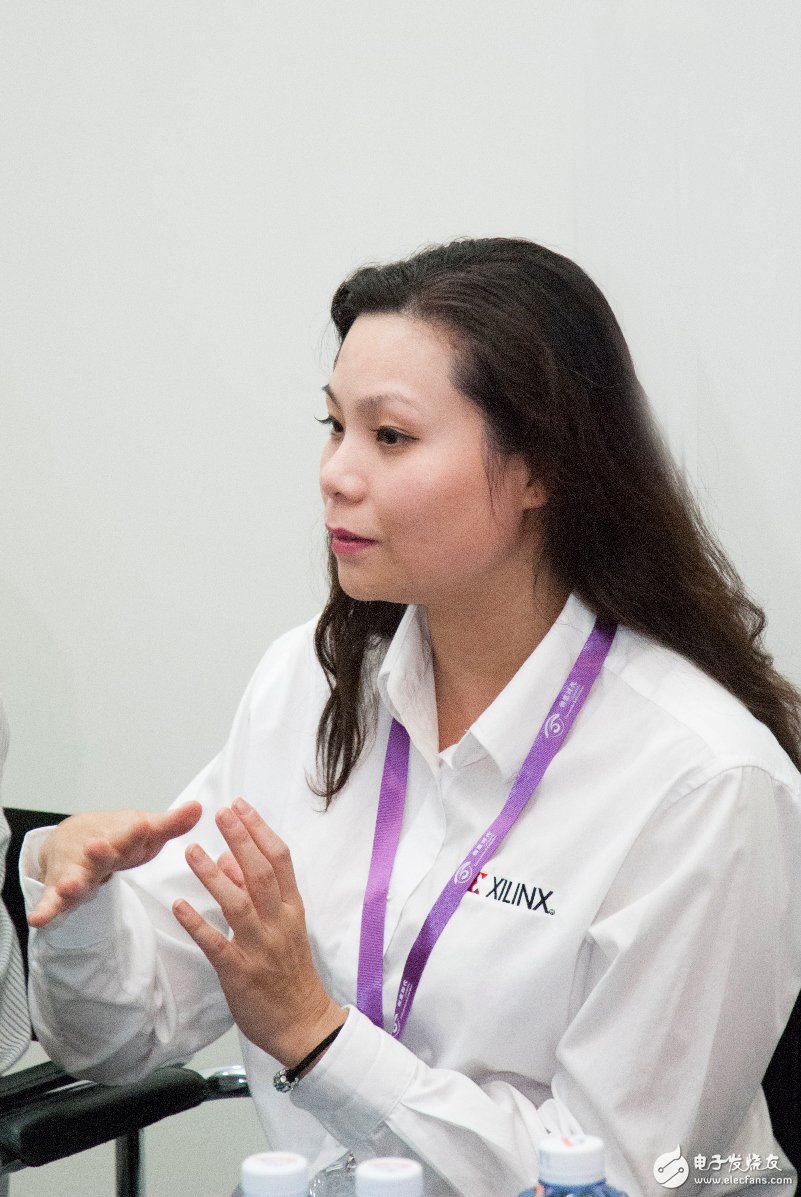Following the introduction of steam engines, large-scale industrial production and industrial automation, with the gradual formation of the Internet of Things and intelligent manufacturing, the "Industry 4.0" era is quietly striking. The "Industry 4.0" project is mainly divided into two major themes, one is "smart factory", focusing on the research of intelligent production systems and processes, and the realization of networked distributed production facilities; Production logistics management, human-computer interaction, and the application of 3D technology in industrial production processes. This article will explore the development trends of smart factories in the era of Industry 4.0 and the huge business opportunities hidden behind them from the most representative digital and analog manufacturers, Xilinx and Maxim.
The intelligent factory is a new concept proposed by some countries after achieving highly automated production. Its conceptual advantage is to promote the intelligentization of industrial production, thereby realizing a science-fiction-like industrial production model. Industrial production systems and processes, the realization of networked distributed production facilities, production logistics management, human-machine interaction, the use of new technologies, and the use of embedded sensors to monitor relevant environmental parameters and production all require the support of intelligent equipment.
Smart factory prospects can expect FPGA to become a siege weapon

Tu Xilinx ISM marketing manager Lin Yifang said that intelligent chemical plants and intelligent automatic production lines are two future trends driven by technology.
Intelligent production line, for example, industrial automation is a more subtle item of intelligent factory. The intelligent factory also includes plant management, effective energy use, security protection, network, monitoring and safety analysis, and can ensure that the entire operation of the factory can be smooth and safe. The intelligent automatic production line can monitor the overall equipment efficiency (Overall Equipment EffecTIveness), promote it to achieve the highest quality and efficiency, and can minimize downtime.
Xilinx components are widely used in many markets and applications, and the industrial market is our very important market, especially Xilinx's Zynq series products. Customers in the industrial market attach great importance to the reliability, flexibility and integration of products. Especially after the on-site deployment is completed, the product's flexible upgrade function can be extremely important as it adapts to changes in various communication protocols and functions.
In order to produce more products, modern factories began to deploy more flexible machines in production lines. For this reason, the factory must provide more space for the machine, because the range of movement may bring significant changes to the entire production line. As more products are added, the safety cage appears to be too restrictive and cannot adapt to the range of movement of the machine.
The growth of FPGA in the field of intelligent chemical plants is very worth looking forward to. As the amount of input data from sensors has increased, and monitoring systems have become increasingly complex, simple software can no longer solve the performance challenges, and many applications have caused performance bottlenecks. In addition, many PC-based solutions have now moved to embedded methods to reduce size and reduce carbon emissions. The challenge faced by traditional embedded components (MCUs) is insufficient real-time computing performance; and Zynq series products can meet both requirements at the same time, integrating software and hardware in a single chip to provide design for intelligent factories Great flexibility.
At the same time, in order to ensure the safety of workers and avoid restricting the scope of activities of automated factory production lines, more and more companies have begun to use Xilinx Smarter Vision technology to establish a safety system. Someone predicts that in the next 10 years, Smarter Vision technology will be widely used in automobiles, factory automation, medical, monitoring, consumer, aerospace and military products to enrich people's lives.
The operation of smart factories and production lines involves extremely complex logic designs, and is limited by excessively high operating costs, design calculation limits, and network bandwidth. High-performance FPGAs can best meet these needs. In the field of industrial automation, a highly flexible platform can quickly integrate and control various production technologies, thereby greatly improving the overall productivity. Lin Yifang emphasized that through FPGAs, engineers can build a highly flexible infrastructure and give the system many functions, including creating a more versatile and efficient interface, increasing data processing speed, and reducing construction costs.
Simulation integration leads the top of factory integration Maxim Company stands out

Figure John Mossman, terminal application marketing manager of Maxim, believes that Maxim has been adhering to analog integration and is therefore promoting the construction and development of factory integrated production lines.
FPGA has become a formidable cannon to attack the beach front of the smart factory, and the construction of the intelligent system is inseparable from the help of highly simulated integration. Factory integration includes: increasing the degree of machine intelligence, achieving the communication between machines (M2M) and the autonomy of production lines, not just the autonomy of machines. The autonomous production line further integrates communication into the high-level structure of the factory through Ethernet, thereby achieving the integration of the Internet of Things (IoT) and the factory control system with the business system or IT.
Of course, the accelerated introduction of Ethernet into the factory network has greatly increased the risk of network attacks. John said that Maxim has extensive experience in providing security solutions based on embedded hardware and has been extensively verified in fields such as financial terminals and automatic teller machines (ATM). These solutions can be used directly to provide security protection for communications between smart industrial devices that are vulnerable to electronic and physical attacks.
It is understood that in the past few years, Maxim has updated several industrial product lines and added new technologies for the industrial market, including: digital input serializers; digital output drivers; low power consumption, high efficiency, high voltage buck converters ; Very low power consumption, ultra high performance ADC and DAC; and other advanced technologies. Using these functional modules, such as power supply, communication, analog signal processing and digital signal processing, we have developed a variety of subsystem reference designs to effectively help customers free themselves from the arduous work of finding compatible devices to achieve optimal performance.
In view of the special needs of smart factories for ICs, the key characteristics of ICs used in smart factories include: small size, low heat consumption, high precision, and high reliability that can withstand harsh working environments. John revealed that PLC / PAC (programmable logic controller / programmable automatic controller), smart sensors and field instruments are the areas that Maxim focuses on.
Looking forward to the future business opportunities of smart factories
Modern factories have begun to use a new and intelligent way to produce products, and I believe that the future production plants will be much smarter. This intelligence will be achieved through the use of miniaturized processors, storage devices, sensors and transmitters, which will be embedded in almost all conceivable machines, unprocessed products, materials, smart tool types and the data used to organize data New software. All these innovations will enable products and machines to communicate with each other and exchange commands. In other words, factories in the future will be able to optimize and control their manufacturing processes to a great extent. Although there is still a long way to go before this, it will not affect the future trend of intelligentization at all. Of course, with the increasing popularity of intelligent chemical plants and production lines, how to improve the overall manufacturing capacity, yield and stability has become the major concern of major manufacturers. If you can grasp these key advantages, you can grasp important business opportunities in the fiercely competitive market.
——This article is selected from the special issue of “Intelligent Industry Special Issue†published by Electronic Fans Network in September. Please indicate the source for reprinting.
The piezoelectric transducers (for External Drive) produce exceptional sound output and efficiency all while meeting each customers unique performance requirements. Piezo transducers are constructed without magnets, instead they create sound mechanically via the piezoelectric effect. Our piezo transducers are not equipped with a built in drive circuit. This provides our customers with the flexibility of designing their own circuitry to meet their specific needs. The advantage of using an external drive circuit is that the piezo transducers can output sounds at multiple frequencies. Full bridge circuits ramp up SPL for more peak-to-peak voltage, making our piezo transducers a high output solution.
Piezoelectric Buzzer For External Drive
Piezo Alarm Buzzer,Alarm Piezo Buzzer,Fire Alarm Piezo Buzzer,Active Magnetic Buzzer
Jiangsu Huawha Electronices Co.,Ltd , https://www.hnbuzzer.com